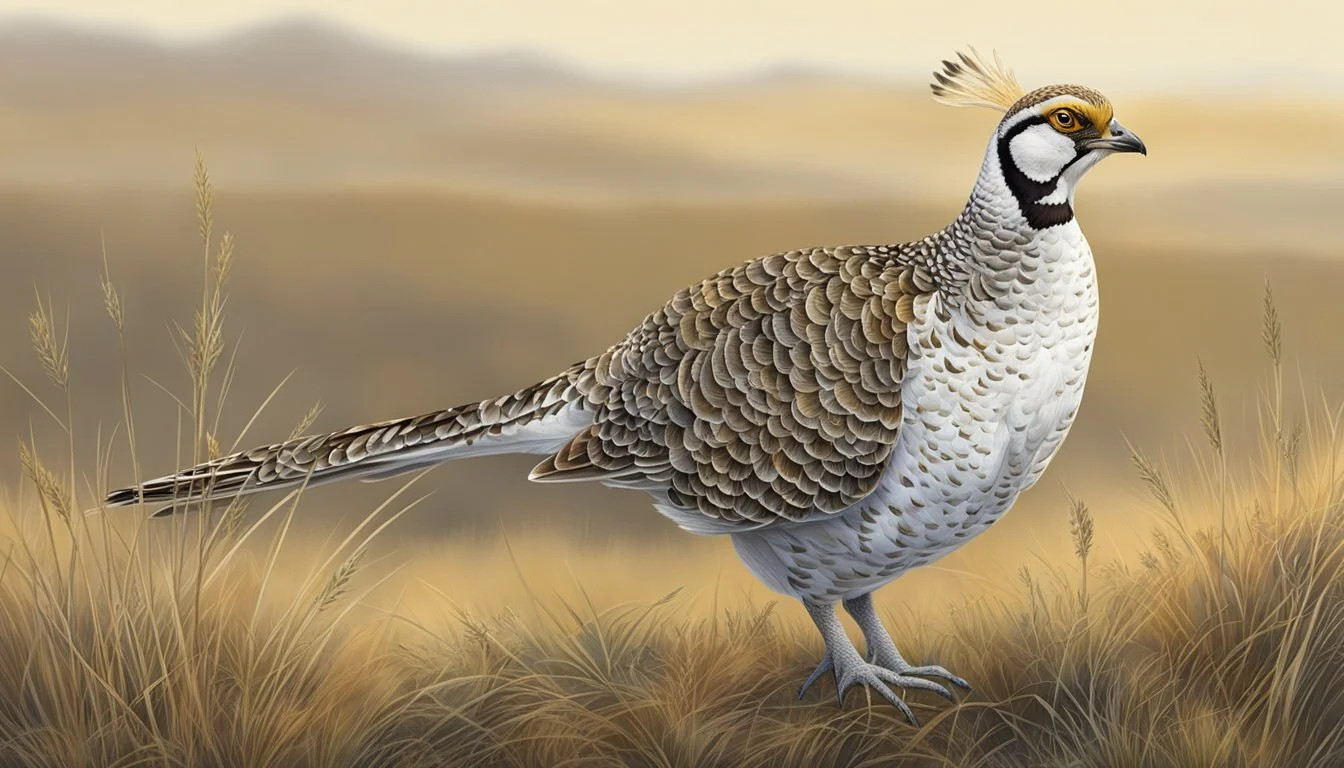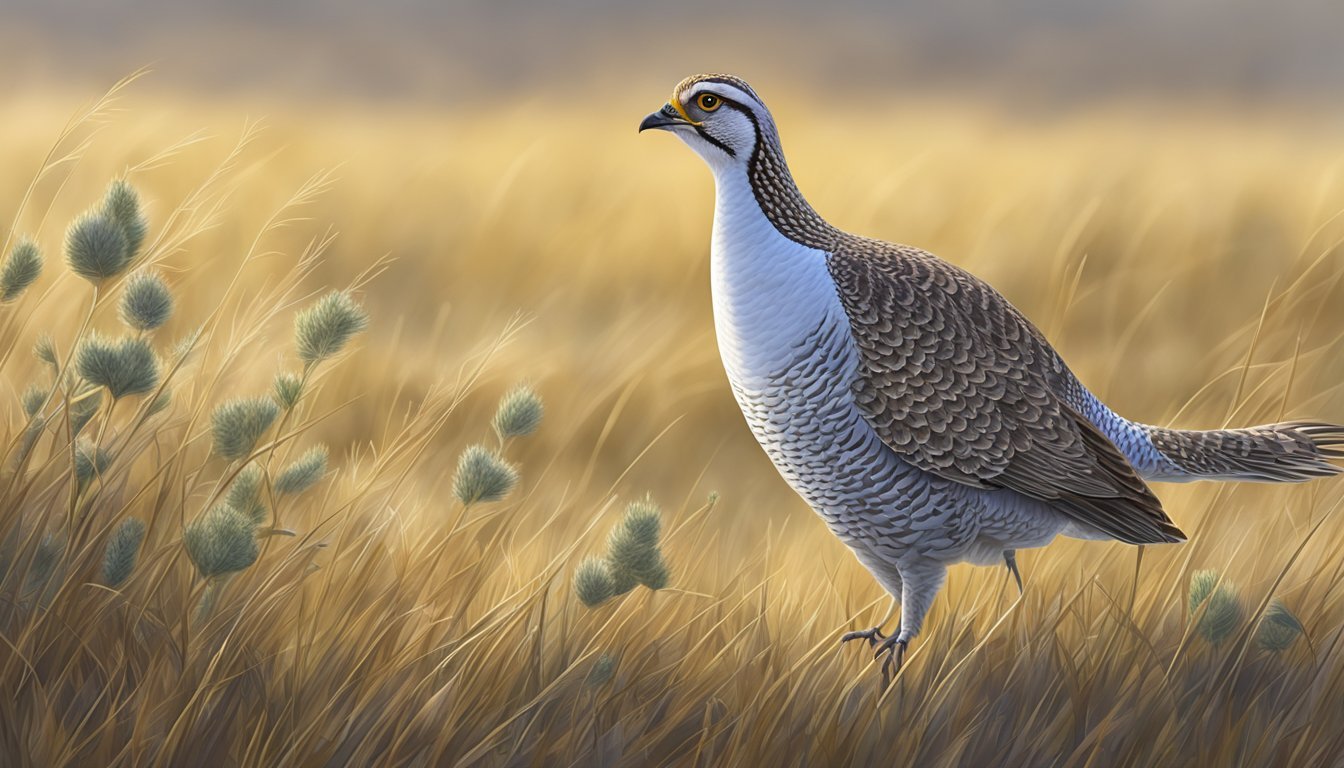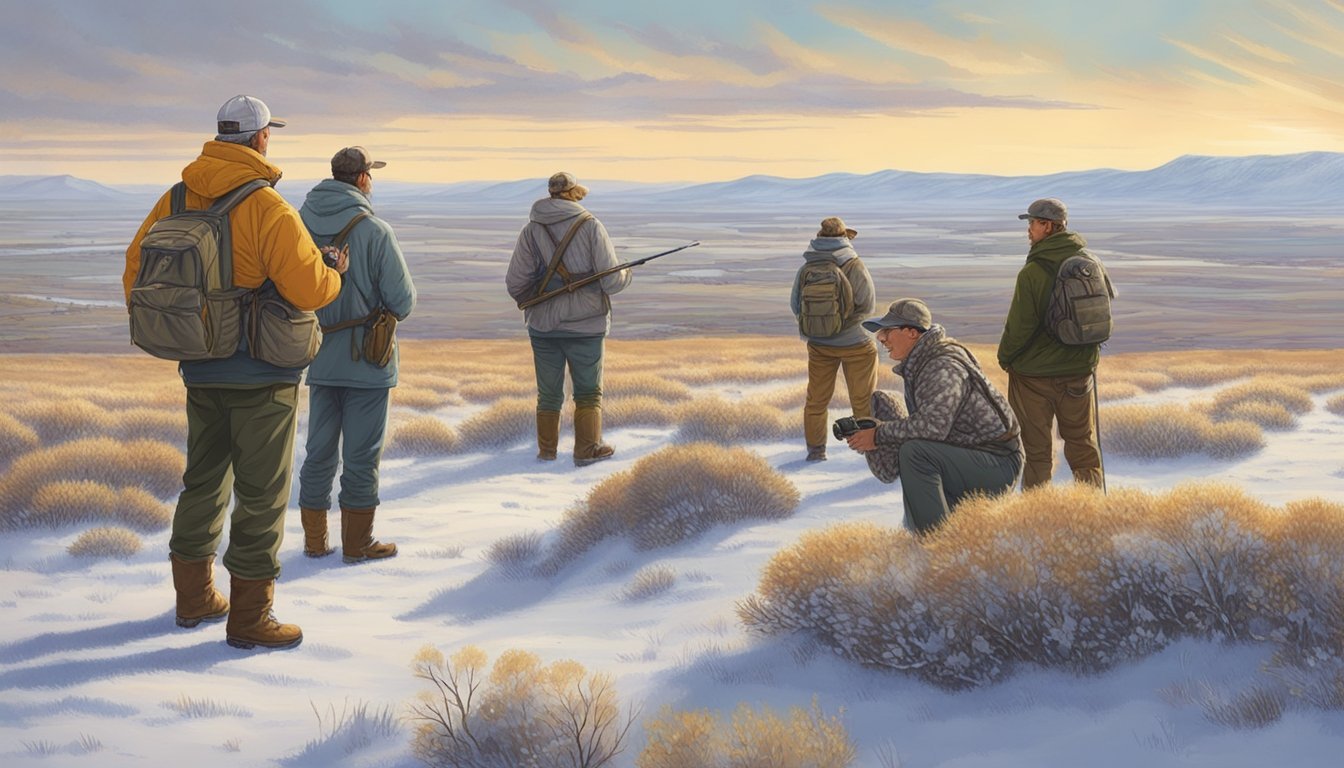Sharp-Tailed Grouse Hunting for Beginners
Essential Tips for Success
Sharp-tailed grouse, known colloquially as sharptails, are among the more challenging and rewarding game birds for hunters. These birds are primarily located in the open grasslands and brushy locales of North America. Hunting these agile birds requires understanding their behavior and habitat preferences. Once abundant in states surrounding the Great Lakes, sharptails have seen their numbers decrease due to significant habitat loss, yet they remain a sought-after species for dedicated upland bird hunters.
The key to hunting sharp-tailed grouse successfully often lies in the preparation and knowledge of the landscape they inhabit. Sharptails are less tolerant of heavily forested areas, preferring landscapes with less than fifty percent tree cover. They thrive in a mixture of open grasslands, wet meadows, and brushy growth. This preference for specific environments shapes hunting strategies, making the study of their habitats and habits crucial for beginners.
Effective hunting techniques for these birds involve considerable physical effort as the terrain they inhabit requires hunters to traverse large, open spaces. Sharptails are known for their wariness and the considerable distances they can put between themselves and hunters. Therefore, beginners should be prepared for the rigors of pursuing these wild, open-country birds, where success is often a combination of endurance, skillful planning, and a well-trained hunting dog.
Understanding Sharp-Tailed Grouse
To hunt sharp-tailed grouse effectively, one must be familiar with the species, its preferred habitats, and feeding behaviors.
Species Overview
The sharp-tailed grouse, scientifically known as Tympanuchus phasianellus, is a medium-sized game bird native to North America. These birds are recognized by their round bodies, short wings, and distinctive sharply-pointed tails. Both sexes have similar barring of brown, black, and cream across their body feathers. Adults typically weigh between 2 to 3 pounds, making them larger than a ruffed grouse but smaller than the greater prairie chicken.
Habitat and Distribution
Sharp-tailed grouse thrive in open grasslands, favoring the short-grassed prairies of the central Plains. Ideal habitats include natural or agricultural grasslands interspersed with brushy areas such as draws and coulees. These birds are less commonly found in regions where more than 50% of the terrain is forested. The distribution of sharp-tailed grouse extends across the prairie regions of North America, where suitable habitats are still available.
Diet and Feeding Habits
Their diet is diverse, changing seasonally. In summer, sharp-tailed grouse primarily consume seeds, flowers, buds, and a significant amount of insects, like grasshoppers, which are crucial for the protein needs of growing chicks. During the winter, their diet shifts more to tree and shrub buds, along with available berries. These grouse forage mostly on the ground during the warmer months and rely on trees and shrubs for food during colder weather, adapting their feeding habits to the changing availability of resources throughout the year.
Preparing for the Hunt
Embarking on a sharp-tailed grouse hunt requires understanding regulations, securing proper gear, selecting an appropriate shotgun with the right choke, and choosing a capable hunting dog. These components form the foundation for a successful and responsible hunting experience.
Legal Regulations
Each state has specific hunting regulations that govern sharp-tailed grouse hunting, including season dates, bag limits, and possession limits. Hunters must obtain the necessary hunting licenses and be aware of any area-specific restrictions. It is critical to consult the state's Department of Natural Resources (DNR) or wildlife agency for current information.
Equipment and Gear
To navigate the open prairies where sharp-tailed grouse thrive, hunters should equip themselves with:
Sturdy boots for walking through rough terrain
Camouflage clothing to blend into the natural environment
Eye and ear protection for safety during the hunt
A daypack with essentials like water, snacks, and a first-aid kit
Choosing the Right Shotgun and Choke
Selecting the right shotgun largely depends on personal preference and comfort. However, a 12-gauge or 20-gauge shotgun is typically recommended for grouse hunting. As for chokes, three common choices are:
Improved Cylinder (IC) for close-range shooting
Modified Choke for medium-range scenarios
Full Choke for longer shots
The choice of choke should align with the expected shooting distances during the hunt.
Hunting Dog Selection
A well-trained hunting dog enhances the hunting experience and increases the chance of success. There are two main types of dogs used in grouse hunting:
Pointers, which locate and indicate the position of the game
Flushers, which help drive the game into the open
Dog performance is key, as the dog's ability to scent and react to the game can dictate the pace and outcome of the hunt.
Hunting Techniques and Strategies
In sharp-tailed grouse hunting, a hunter's success lies in mastery of scouting, understanding grouse behavior, perfecting shooting techniques, and effectively employing a bird dog.
Scouting and Locating Grouse
To locate sharp-tailed grouse, hunters should scout expanses of suitable habitat at dawn or dusk when birds are most active. Look for open fields with a mixture of grasses, shrubs, and bare ground that these birds favor. Binoculars or a spotting scope can help identify the telltale signs of grouse, including spots where they feed or patches of disturbed ground indicating dust baths.
Understanding Grouse Behavior
Sharp-tailed grouse have predictable patterns, often flying between roosting, feeding, and watering areas. Hunters need to learn these routines to anticipate the bird's movements. Grouse tend to gather in leks or communal areas, making them easier to locate. Recognizing these behavior patterns and utilizing them to predict flushing sites is key to a successful hunt.
Effective Shooting Techniques
When a grouse flushes, it does so with rapid, straight flight. Hunters should practice quick mounting and aiming to ensure accuracy. It is beneficial to:
Stay ready with a positioned shotgun for quick reaction.
Swing-through the bird, shooting ahead of its flight path for effective hits.
Remain calm and avoid rushed shots that often lead to misses.
Working with Hunting Dogs
A well-trained bird dog can greatly enhance the hunting experience. Dogs proficient in pointing or flushing can help hunters cover more ground and locate grouse that might otherwise go unnoticed. Key aspects include:
Training the dog to work within range of the shotgun.
Encouraging the dog's natural abilities while ensuring obedience.
Understanding the dog's body language to anticipate when grouse are near.
By adhering to these techniques and strategies, hunters can improve their chances of successfully harvesting sharp-tailed grouse.
Seasonal Considerations
When planning for sharp-tailed grouse hunting, one must pay careful attention to the distinct phases of the season. Each phase presents unique opportunities and challenges influenced by the bird's behavior and habitat preferences.
Early Season Hunting
In the early season, typically starting in early September, hunters can experience encounters with smaller family groups of sharp-tailed grouse. During this period, the birds have not been heavily pressured by hunters, making them less wary and providing an excellent chance for both novice and experienced hunters to engage with relatively uneducated birds. The landscape is often dominated by lush grasses and the summer's residual greenery, which can provide cover for the birds and add to the challenge of a hunt.
Preferred Habitats: Look for grouse in areas where grasses are interspersed with shrubs and other vegetation. Early season grouse may also be found in prairies with adequate cover for protection and feeding.
Hunting Tips:
Focus on morning or late afternoon when grouse are more active.
Observe for signs of grazing and dusting areas where birds may congregate.
Stay quiet and move deliberately as these birds can be more approachable during the early season.
Mid to Late Season Hunting
As the season progresses into the middle and late phases, sharp-tailed grouse behavior shifts in response to hunting pressure and the changing environment. Flocks may become larger as family groups merge, and birds often move to different areas in search of food or cover. Hunting during this phase can be more challenging as the grouse become warier and the landscape undergoes transformation with the advance of autumn into winter.
Key Landscape Changes: As grasses brown, sharp-tails may become easier to spot, but they also become more cautious. Hunters should adapt to the open-country habitat preferred by sharp-tailed grouse, scanning for movement across the landscape and targeting areas near food sources.
Hunting Adjustments:
Be prepared for longer shots as birds become more skittish and flush at greater distances.
Utilize a methodical approach, leveraging the increased visibility of the later seasons to spot and flush flocks.
Emphasize stealth and camouflage, as sharp-tails are highly vigilant during this phase of the season.
Conservation and Management
Sharp-tailed grouse conservation is a multifaceted approach that aims at preserving their grassland habitat, which has been dwindling since European settlement. It necessitates collaborative efforts among various stakeholders, including hunters, conservationists, and wildlife agencies.
Habitat Conservation Efforts
Conservation efforts for sharp-tailed grouse are primarily focused on reversing habitat loss that these birds have faced due to changes in land use since European settlement.
Restoration Projects: Many wildlife departments are actively working with partner groups to restore native grassland habitats, crucial for the survival of species such as the sharp-tailed grouse, as well as other prairie chickens and prairie grouse.
Management Strategies: Controlled burns, grazing management, and the protection of lekking sites are among the methods employed to maintain and enhance suitable grassland ecosystems.
Landowner Collaboration: Incentive programs are in place to encourage private landowners to implement wildlife-friendly practices that support habitat conservation.
By executing these initiatives, agencies aim to provide a sustainable environment that supports not only sharp-tailed grouse but a diverse range of grassland fauna.
The Role of Hunters in Conservation
Hunters play a significant role in the conservation of sharp-tailed grouse and their habitats.
Funding: Licensing fees and excise taxes on hunting gear contribute financially to conservation programs and the management of sharp-tailed grouse populations.
Population Control: Hunters facilitate maintaining balanced grouse populations in harmony with their available habitat, which can serve to prevent overpopulation and associated diseases.
Data Collection: Through harvest reporting and participation in surveys, hunters provide essential data that help biologists monitor population health and trends for informed decision-making.
As stewards of the land and conservation partners, hunters are involved in habitat management efforts, contributing to the sustainability of the species they pursue.
Regional Focus
In pursuing sharp-tailed grouse, hunters should target specific regions known for sustaining large populations of this upland bird species.
Best Locations for Sharp-Tailed Grouse Hunting
Sharp-tailed grouse are indigenous to diverse areas across North America with a pronounced presence in several U.S. states and certain Canadian territories. Ideal hunting grounds are typically characterized by grassland habitats or areas with short brush, minimal forestation, and open vistas facilitating the bird's need for clear visibility. Public lands in these regions often offer accessible hunting opportunities.
Alaska and Canada are well-known for their robust sharp-tailed grouse populations, presenting extensive hunting possibilities due to their vast and often underdeveloped landscapes.
In the contiguous United States, hunters frequently target the following states for sharp-tailed grouse:
Wyoming
North Dakota
South Dakota
Nebraska
These states consist of the Great Plains, a region that provides an ideal habitat for sharp-tailed grouse.
Michigan, specifically the eastern portion of the Upper Peninsula, also supports a viable sharp-tailed grouse population, where state-regulated hunting seasons provide opportunities for residents and non-residents alike.
Although not traditionally associated with large populations of sharp-tailed grouse, states such as Colorado and Idaho do have some presence of these birds, mostly limited to specific regions where habitats align with the birds' habitat preferences. Hunters should thoroughly research and adhere to state-specific regulations and seasons to ensure a legal and ethical hunting experience.
After the Hunt
After a successful day in the grouse hunting prairies, the hunter is presented with the rewarding task of handling and preparing the harvested birds for the table. It is important to undertake this with care to honor the game and ensure a delicious meal.
Handling and Cleaning your Harvest
The technique of processing sharp-tailed grouse begins with careful plucking of the feathers to preserve the skin, which adds flavor during cooking. One should then remove the head, wings, and lower legs. A small incision is made at the bird's vent to facilitate the removal of the innards, ensuring all internal organs are thoroughly cleared out.
Pluck Feathers: Begin plucking, taking care to keep the skin intact.
Remove Extremities: Decapitate, and detach the wings and lower legs.
Evisceration: Make an incision near the vent, remove innards, and clean the cavity.
Cooking and Enjoying Grouse Meat
Cooking is the final step where the harvested sharp-tailed grouse is transformed into a hearty meal. The meat can be delicate and is best enjoyed when cooked to medium-rare, ensuring it remains tender and juicy.
Grilling: Season and grill the breasts for a smoky flavor.
Roasting: Stuff and roast whole for a traditional approach.
Pan-frying: Quick and even pan-frying can seal in the juices.
Remember to let the meat rest and reach the optimal temperature before enjoying the fruits of the hunt.








